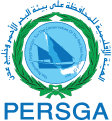Consolidated Jeddah Convention
The Red Sea and Gulf of Aden Region (RSGA) is internationally recognised for the variety and value of its coastal and marine environments in addition to its strategic, economic, and social values to the Region. The most significant threats to the long-term stability of the marine ecosystem stem from the increase in the human population in the coastal zone and the rapid rise in economic growth resulting in considerable pressure on the environment.
The Jeddah Convention and its Related Legal Instruments:
1982

Jeddah Convention: The Regional Convention for the Conservation of the Red Sea and Gulf of Aden Environment
Jeddah convention considered the legal framework and the basic reference for the PERSGA members States in the field of protection marine environment and coastal areas in the Red Sea and Gulf of Aden. The convention joined 29 articles and entry into force 20 August 1985. the main aim of this convention its conservation of the marine environment of the Red Sea and Gulf of Aden: Rational use by man of living and non-living marine and coastal resources in a manner ensuring optimum benefit for the present generation while maintaining the potential of that environment to satisfy the needs and aspirations of future generations.
still in 1982

The Action Plan for the Conservation of the Marine Environment and Coastal Areas in the Red Sea and Gulf of Aden
The Action Plan for the Conservation of the Marine Environment and Coastal Areas in the Red Sea and Gulf of Aden, Jeddah, Saudi Arabia, ,1982was developed to translate the priorities set out in the Jeddah Convention (1982) into a framework of action for an environmentally sound and comprehensive approach to coastal area development.
still in 1982

Final Act of the Jeddah Plenipotentiary Regional Conference on the Conservation of the Marine Environment and Coastal Areas in the Red Sea and Gulf of Aden
The Final Act of the Jeddah Plenipotentiary Regional Conference on the Conservation of the Marine Environment and Coastal Areas in the Red Sea and Gulf of Aden,1982, summarizes the proceedings surrounding the establishment of the Jeddah Convention (1982) and with particular emphasis on the administration procedures for the implementation of the Convention. It refers to the Agenda adopted at the Jeddah Conference, including the agreement on Committee members, financial stipulations, and the establishment of the regional headquarters for the Convention Secretariat in Jeddah, Saudi Arabia
still in 1982

The Protocol Concerning the Regional Cooperation in Combating Pollution by Oil and other Harmful Substances in Cases of Emergency
priorities the need for cooperative and effective measures to deal with such emergencies and enhanced response mechanisms in order to protect the regional marine environment from adverse oil spill effects.
1995

Cairo Declaration Concerning the Formation of the Regional Organization for the Conservation of the Environment of the Red Sea and Gulf of Aden (PERSGA)
The Cairo Declaration Concerning the Formation of the Regional Organization for the Conservation of the Environment of the Red Sea and Gulf of Aden (PERSGA), 1995, formally launched PERSGA as an operational organization to implement the activities and priorities stipulated in the Jeddah Convention (1982), its Protocols and its Action Plan. The Council Decision transferred to PERSGA its duties as outlined in the Jeddah Convention (1982).
2005

The Protocol Concerning the Conservation of Biological Diversity and the Establishment of a Network of Protected Areas the Red Sea and Gulf of Aden
This protocol is one of the protocols supplemented to Jeddah convention. The protocol signed in 12 December 2005 Jeddah, Saudi Arabia. The protocol consist 30 articles divided to seven parts. The main goal of protocol to provide for the conservation, protection and restoration of the health and integrity of the ecosystems and biological diversity in the PERSGA region. and to safeguard the threatened species, the critical habitat, sites of particular importance, as well as representative type of coastal and marine ecosystems, their biodiversity and their sustainable use and management, to ensure long-term viability and diversity. The Protocol was prepared in cooperation with ROPME and the GCC, with EU support, and was created with the aim to complement existing international treaties, such as the Convention on Biological Diversity.
still in 2005

The Protocol Concerning the Protection of the Environment from Land-Based Activities in in the Red Sea and Gulf of Aden
This protocol is one of the protocols supplemented to Jeddah convention. The protocol signed in 25 September 2005 during the meeting in Jeddah. The protocol contains 25 articles; the general provision of this protocol shall take all appropriate measures to protect the environment of the Red Sea and Gulf of Aden against pollution resulting from any land-based sources or activities and to reduce and/or eliminate such pollution tot he maximum extent possible with priority given to the gradual elimination of toxic, persistent, and biologically accumulating inputs. The Protocol responds to emerging LBA issues from recent global summits and aligns itself with the articles contained in section 12 of the United Nations Convention on the Law of the Sea (1982), as well as the UNEP-GPA goals. Furthermore, PERSGA’s maturing ICZM work in its Member States potentially lays a solid foundation for addressing the national-regional character of LBA activities in terms of land-based pollution affecting the marine environment.
2009

The protocol Concerning Technical Cooperation to Borrow and Transfer Experts, Technicians, Equipment and Materials in Cases of Emergency
This protocol is considered as an important supplement that consolidates the Jeddah Convention (1982) and activities the function of PERSGA/EMARSGA; it plays an important role in promoting regional cooperation to reduce the risk of pollution resulting from maritime accident. This protocol includes 11 articles and three annexes.

